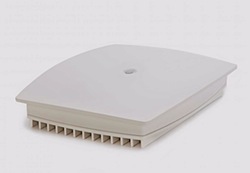SpiderCloud Wireless has launched a new dual-mode enterprise small cell as its CMO questions whether rivals have what it takes to succeed in this “overhyped” segment.
The vendor’s new solution features an integrated 3G and LTE baseband system-on-a-chip (SoC), together with software that can control over 100 self-organising and multi-access 3G, Wi-Fi and LTE small cells by using an enterprise’s existing ethernet LAN installation.
Each small cell is capable of supporting 32 3G/HSPA+ channels, 32 active LTE users, 128 LTE connected users, VoLTE and can be upgraded using software to support two LTE frequency bands.
An SCRN-310 radio node is simultaneously able to offer both UMTS and LTE service.
“We’re the only [vendor] out there that can currently scale to support 100 radio nodes over ethernet [which] can be done in just days [with] our own SON software,” Ronny Haraldsvik, senior vice president and CMO of SpiderCloud Wireless told Mobile Europe.
The vendor has been working with Vodafone in Europe in the last four years and started commercial deployments with the operator two years ago.
“What’s different is that we have two years behind us in deploying scalable systems. Other industry players can do it too, for example Ericsson, but their solution is a Distributed Antenna System (DAS), not a small cell, although they call it that, and they’re 12 months away from a commercial release.
“You can’t take a macrocellular solution and take it indoors and think it’s going to work because the environment is drastically different. The lesson that the industry has learnt is that you can’t take a residential femtocell and try to make it work and scale. “
Ericsson declined to comment when contacted by Mobile Europe.
Spidercloud also said it agrees with some operators in the industry who claim the small cells area is overhyped.
“If you look at the hype around femtocells, it became recognised that it wouldn’t scale and wouldn’t work. We knew that so we avoided that. NSN and Alcatel-Lucent have tried unsuccessfully to take the macrocell, shrink it down and see if it works inside, but it doesn’t, because there are a whole lot of interference parameters,” claimed Haraldsvik.
“As a CTO of a big telecoms company, you want to see the biggest RAN vendors fix [these problems] and bring to market a solution that works, but the lesson we’ve learned is that you can’t demand enterprises to put in costly fibre [networks] when they already have ethernet in place. That’s going to be a barrier to entry.”
Stephane Daeuble, small cell marketing manager at NSN, responded: “NSN Flexi Zone pico and micro offer full macro parity – hence including robust interference management – while also allowing existing Ethernet cabling, even shared with existing LAN traffic, to be used. Indoor spaces actually simplify interference management by attenuating external RF. The preferred solution choice for indoor coverage is dictated by the business case and not the technology.”
A-L’s VP of Small Cells Mike Schabel added: “This new market requires significant innovation, and we appreciate the latest efforts by numerous small cell vendors to help solve the critical challenges related to delivering a high quality of experience for mobile users. In our deployments to date, we have learned how important it is to simplify deployments indoors, especially by using as much of the existing infrastructure as possible. A-L’s indoor small cell solutions support both Ethernet and fibre in order to provide full flexibility in deployments, allowing them to take advantage of existing available infrastructure.”
Overall, says Haraldsvik, the small cell lessons that the industry is learning reflect those experienced with Wi-Fi 12 years ago: “[Then] it became recognised that you couldn’t take a Linksys or Netgear access point that you’d buy for the home or SME and think that it would work in a large-scale deployment. Aruba and Motorola built a $5 billion market in providing controller to AP scalable Wi-Fi systems. We’re doing the same thing.”


